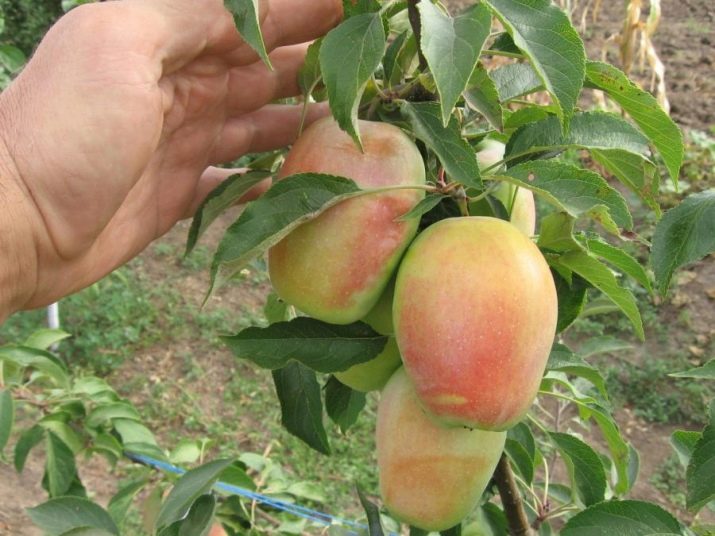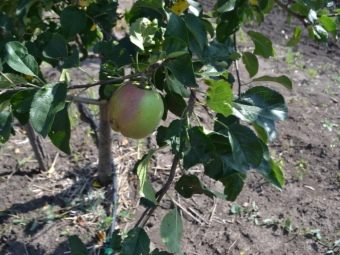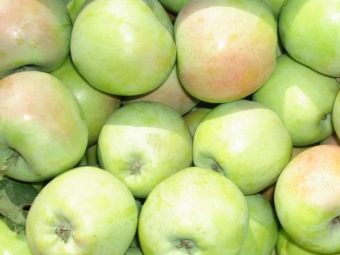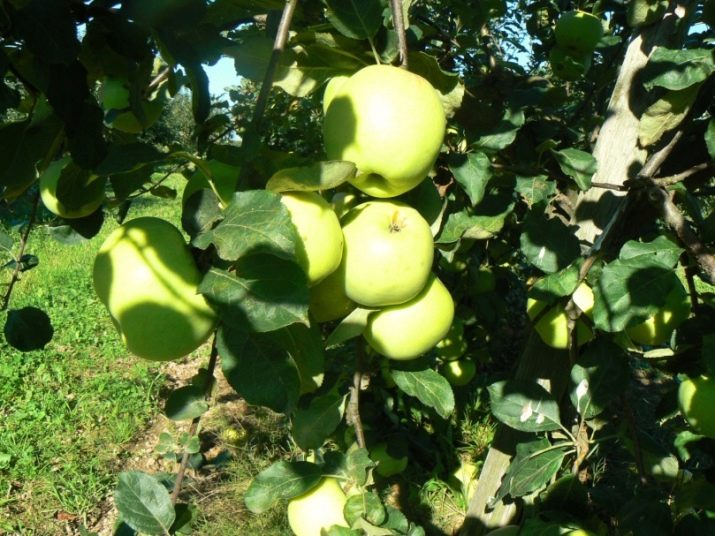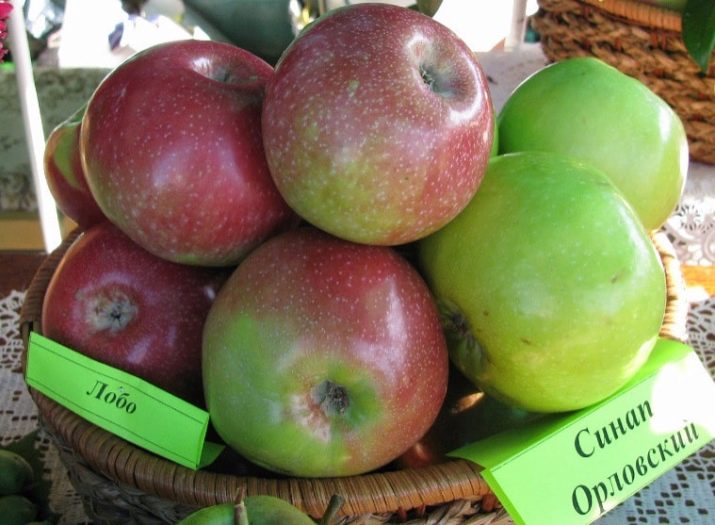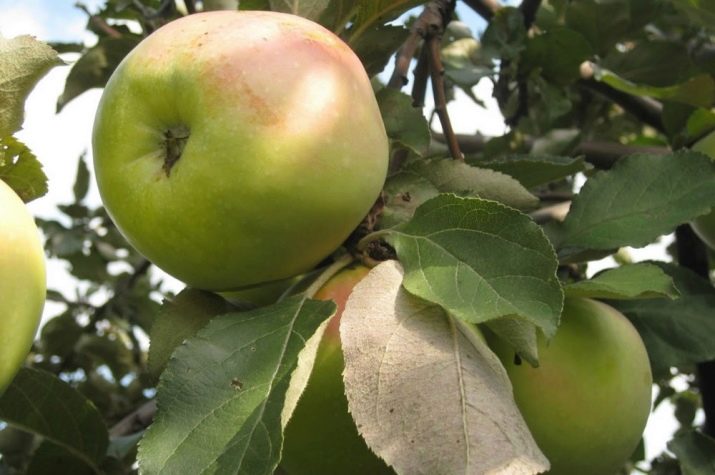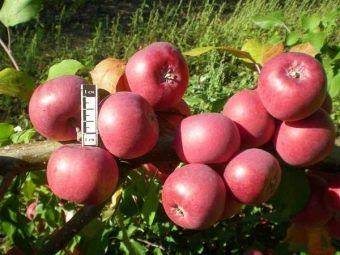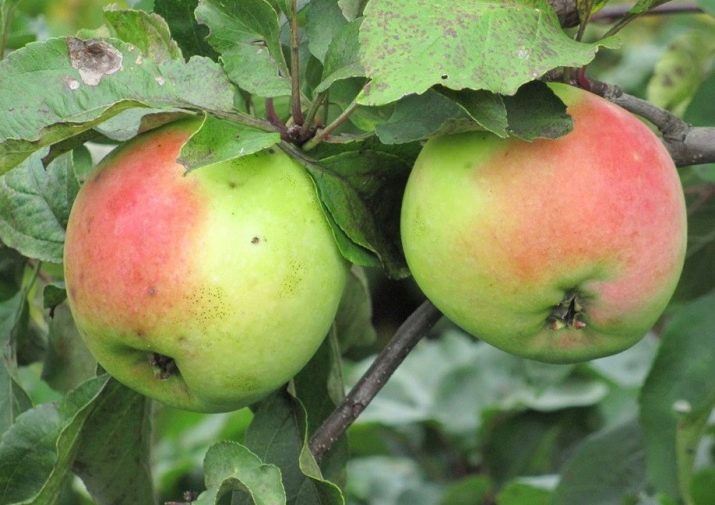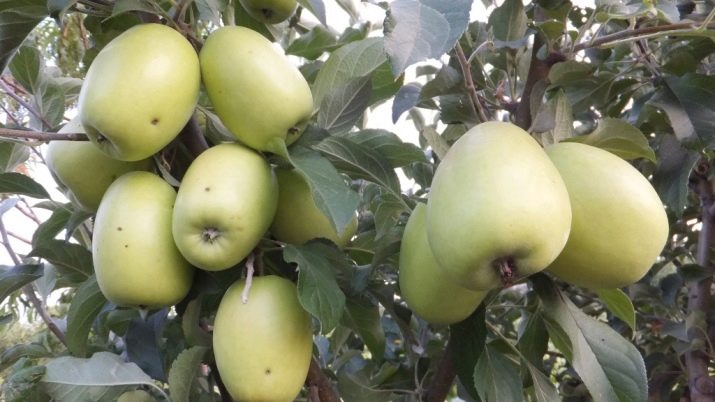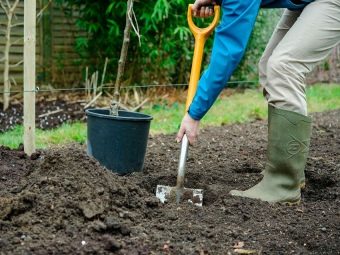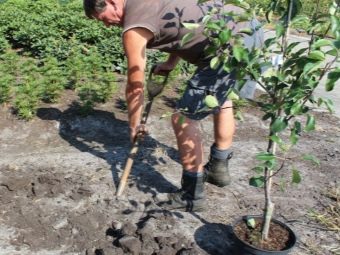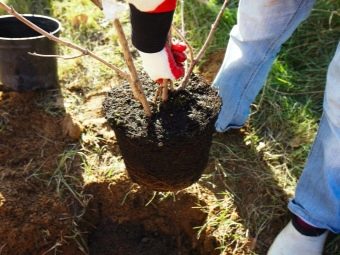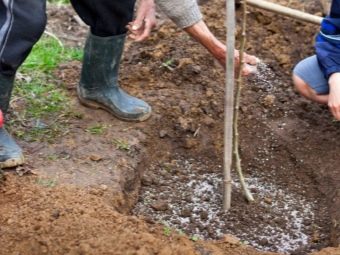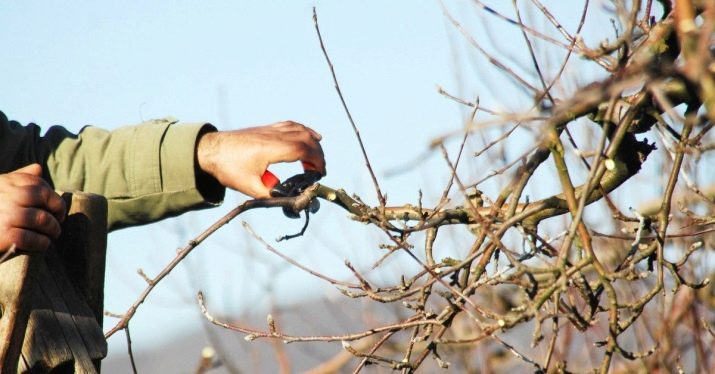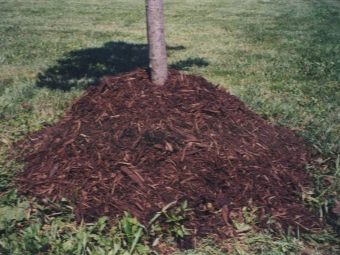Apple trees of the Sinap varietal group: description of varieties, planting and care

The Sinap variety has a large number of varieties. Some of them are incredibly popular among experienced and novice gardeners, their fruits are stored for quite a long time, they have wonderful taste and appetizing presentation. When a tree begins to bloom, it can become a worthy decoration of the garden thanks to its beautiful flowers.
History of origin
"Kandil Sinap" (Sinap Crimean) is a popular southern variety of apple trees. Many consider it one of the most worthy varieties bred by breeding. This variety is the progenitor of the Northern Sinapa. Some gardeners have reported that the famous variety "Sara Sinap" was mutated, as a result of which "Kandil Sinap" occurred. Crimean apple tree, native grows well in the Krasnodar Territory, in Ukraine and in Ingushetia.
general description
The trees in this class are quite tall, large. An adult apple tree can have a height of five meters. If the stock is dwarf, the plant reaches three meters. The crown is shaped like a pyramid, not very thick. There are a small number of skeletal branches, quite a lot of lateral shoots. It has spreading branches growing from the headquarters at right angles. The ends are directed upwards.
Shoots are dark brown, rather thin, have an edge, cranked. The young tree has grayish-cherry branches. The bark of adult plants is gray. Leaf plates are rare, have a green color, rather wide, appear elongated, ovate, with small scales.
Fruits are formed on the shoots that have developed in the past year, as well as on thin rods. The leaves themselves are dark green, sometimes green. Not too big, slightly long, there is an edge below. The edges of the sheet plates are slightly raised. In the period of flowering appear beautiful, large pink flowers, exuding a pleasant aroma.
Ripened fruits - medium or large. Any variety can please gardener tasty and juicy fruits.
Popular species
There are so many varieties of the Sinap variety. It is necessary to know the most popular and popular ones, so that when choosing a fruit crop, you should get exactly what you need.
"Orlovsky Sinap"
It was derived long ago through cross-pollination of the “Northern Sinap” and “Michurin’s Memory”. In order for the harvest to be healthy and large, you need to plant a plant next to apple pollinators: "Saffron pep", "Antonovka ordinary". The gardener will be able to receive the first fruits after planting in the fourth or fifth year. Apples are going to fall, the best thing to do in October. On one plant you can collect seventy kilograms of fruit.
Apples are large, weighing one hundred and ten - two hundred and twenty grams. Round, there are blunt ribs, at the top the form is slightly mown. The seeds are brown. The skin is glossy, shiny, if touched - smooth. Below it you can see almost imperceptible white dots. When harvesting apples yellow-green hue. When stored, acquire brightness in color, golden yellow color. Sometimes there are fruits with scarlet blush. If the fruit is ripe, the flesh will be creamy, if not - light green. The taste is sweet, there is a lot of juice in the pulp. Apples have almost no smell.
"Northern Sinap"
The free pollination of Kandil Chinese gave the owners of the gardens a worthy variety of Northern Sinap. If a crop is pollinated independently, its yield will be forty percent of the total flowering of the plant. In order to have more fruits, it is necessary to use pollinators: “Slavyanka”, “Antonovka” and “Pepin Saffron”. The plant begins to produce fruit in the fifth or eighth year. If a dwarf stock was used, the first time the fruit can be collected in the second or third year. Blooms large and pinkish flowers.
Young apples are formed on perennial shoots or skeletal growths. They are not too big, they weigh ninety-five - one hundred fifty grams, the shape is cup-shaped, the color is yellowish-green, on some apples a bright reddish blush is found. Pale spots can be seen under the skin. The taste of apples - sweet and sour, refreshing, there are notes of spices. Fine-grained, juicy pulp. Apples begin to ripen in October. An adult tree is able to please the grower with 170 kilograms of apples. Apples ripen during storage after sixty to ninety days.
"Mountain Sinap"
The apple tree is not afraid of the harsh climate, it does not tolerate frosts and precipitations too hard. Wonderful option for growing in the Altai and Western Siberia. Trees have medium height, wide, sprawling crown, therefore for planting a culture a large amount of free space is needed. The variety has a lot of positive qualities. It is easy and simple to take care of it, the tree abundantly bears fruit every year. The fruits are large, dessert, have good taste, juicy. Lezhkost apples - high, able to be stored for six months. The variety is resistant to various diseases, especially scab.
If the temperature is too low, frost freezing can occur, so it is necessary to carefully monitor the condition of the culture.
"Minusinsky Sinap"
The tree is of medium height, the apples begin to ripen in autumn. Begins to bear fruit in the fifth year of life. On average, fruits weigh forty to fifty grams, they are small and yellow-pink. Some have a pink (sometimes purple) blur. The flesh is extremely sweet, juicy, with a loose texture. The plant is not afraid of frost and scab.
"White Sinap"
Extremely popular variety, the fruits of which ripen in November. Feels perfect in the Crimea. The culture is not too high, has a compact, small crown. The color of the bark is yellow, sometimes you can see a light gray tint. The branches can grow at right angles or sharp angles. It starts blooming seven days later than European varieties. Flowering is abundant, but if conditions are bad, the period may stretch for several weeks.
The size of the fruit is small (one hundred thirty - one hundred fifty grams). The apples are cylinder-shaped, the thin skin is covered with a rather thick wax coating. It is incredibly tender, there is a lot of juice in the pulp, the pulp is loose and fine-grained. It has a sweet, sour taste and delicate, interesting aroma. Apples finally ripen in September or October. “White Sinap” is extremely fruitful, gives a lot of fruit (if the stock is dwarf - sixty kilograms from one plant). Apples can be used fresh or make compotes, jams, preserves, fillings for pies.
Planting and care
In order to properly grow this variety, you must choose a place where there would be a lot of sunlight and space. Other crops should be located seven meters from the apple tree. The ideal option would be sandy or loamy soil. It is important to ensure that the underwater waters lay at a distance of 2 meters from the place where the culture will be planted. Trees are planted in spring (March-April) or autumn (September-October). Month of disembarkation will depend on the regions. The pit should be prepared one month before the process begins. Its depth should be ninety centimeters, width - the same.
First you need to remove the turf and fertile layer of the earth, remove it to another place. Then get rid of the poor soil layer. The bottom of the landing fossa should be dug up and put turf. After that, you must mix the previously removed land with fertilizers (two buckets of rotted humus, five hundred grams of wood ash, a bucket of compost, one hundred grams of superphosphate, fifty grams of potassium sulfate).
This tool must be well mixed, and then placed in a hole, filling it one third.
Care should be taken to achieve a slight elevation. A peg is placed in the pit, which will become a support for the seedling.It should be seventy to ninety centimeters above ground level. If the root system of the tree has damage at the ends of the roots, they should be cut. Then soak healthy roots in lightly warm water for six to twelve hours. When the root system is saturated with water, the planting process begins. The plant is gently installed on the hill, the roots are straightened. It is important that the root neck is five to seven centimeters above the ground level.
The pit falls asleep, the ground must be sealed. Tie the tree to the peg with a cloth tape. In order for the crown of the plant to grow and develop better, it is worth cutting the shoots by one third. A foot from the plant should be made of the roller from the soil, and then the seedling is watered with three buckets of water and mulched with peat and humus.
It is very important to timely and regularly take care of the plant so that it gives good yields in the future and is healthy. It should be properly watered the tree, feed, prune, fight dangerous diseases and insects that can weaken the culture. The plant is watered once every fourteen days. For one apple you need to use three buckets of water. In the summer, when drought begins, the volume of fluid increases. The soil under the plant should not be dry. After watering it must be loosened. If there are weeds, you need to get rid of them.
In order for Sinap to bear fruit and grow well, in the spring it is extremely important to get rid of excess branches in the crown. Shoots that are damaged, infected or dry must be removed. When pruning shoots of young trees should be cut no more than forty cm. In older adults - twenty centimeters. For the first time, an apple tree needs to be fed in the second year after planting, in springtime. Six hundred grams of rotted manure should be applied for digging.
After the buds of the plant are formed, it is necessary to carry out abundant watering of the plant, and then place on the ground four hundred and fifty grams of urea. The soil is carefully digged. When the plant ceases to bloom, it is fed with a solution of sixty grams of infusion on bird droppings. You can also use a liter of mullein infusion and sixty grams of superphosphate, which must be diluted in a bucket of water.
After the harvest, the culture is fed with a solution of superphosphate (seventy grams of money per bucket of water, mix thoroughly, treat the plant with a means).
Pest and disease protection
To get rid of possible attacks of parasites and diseases, it is necessary to regularly cut dry and deformed branches, and disinfect the cuts with garden pitch.
Spraying trees is better with chemical agents that are effective.
- A solution of bitter wormwood will help save fruit crops from the moth and other harmful insects.
- If the plant has symptoms of calcium deficiency, it should be sprayed with drugs that contain this element, otherwise it can get bitter pitting. You need to process the tree while the fruit starts to ripen and pour juice. “Calbit C” is a fairly safe and effective option.
- After harvest, the crown should be treated with copper sulfate solution.
- Before the buds begin to bloom, the tree should be sprayed with a solution of Bordeaux mixture and Fitosporin M. This will help prevent the appearance of dangerous insects.
- Before winter frosts, the land is fed with organic fertilizers, dug up and mulched with peat and humus. This will help make the plant stronger and healthier.
- To prevent rodents from inflicting damage to the Stambu, it should be whitened with a solution containing lime and copper sulfate (chalk solution can be used). Then the plant is covered paws of spruce.
- In the spring shelters are removed, the mulch is removed, the soil is dug up and fed.
Reviews
Reviews indicate that each variety has its positive qualities, due to which apple trees are popular among gardeners. The fruits are extremely tasty, of which you can prepare amazing jam and compote. The owners of different varieties report that apples of each variety differ in shape, appearance and taste. If you store fruits in a place that is well ventilated, they can survive until May. Judging by the reviews, this variety is really incredibly tasty, resistant to diseases, easy to clean, and also beautiful during the flowering period. Often gardeners buy this variety specifically so that it decorates landscape design with its pink flowers.
You will learn more about sorting apple trees “Sinap” from the following video.

